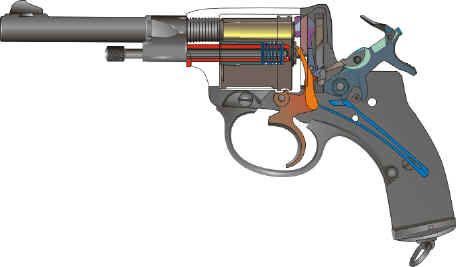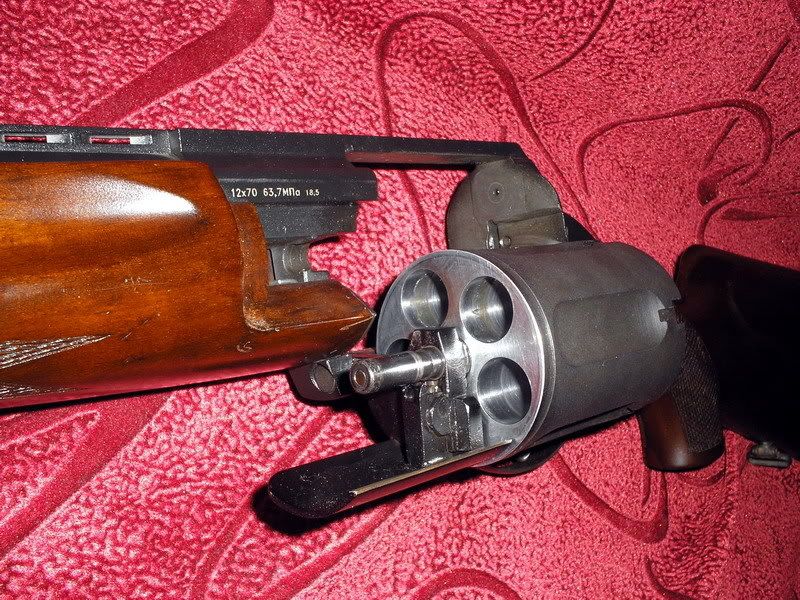I'd suspect that it might be possible to operate such a shotgun in a gas seal mode, like the old Tsarist Nagant revolver:
http://en.wikipedia.org/wiki/Nagant_M1895
A number of old designs used a gas seal to eliminate the loss of pressure that occurs through the gap between the cylinder and the barrel.
If you follow the description of the role the cartridge case plays in the process, as described in the wiki article, I would think that based on this, it might be possible to make it work in a revolving shotgun. In such a case, if the cylinder was long enough to contain the
expanded shell, i.e., with the crimp opened completely, except for a small amount, this small amount would then serve as the seal for the barrel/cylinder joint. Of course, the more of the crimp that extends into the barrel, the more that the cylinder must move backward and forward so that, when the cylinder is rotated to line up the next chamber, the cylinder withdraws sufficiently to extract the extended part of the case (hull) from the barrel to allow rotation.
Since the expanded length of the hull is all part of the system -- the taper of any shotgun's chamber must be long enough for the crimp to expand and not block the bore, which is of a smaller diameter (same as the shot cup), there is a tolerance in the manufacture of hull expanded length that would determine the amount the cylinder would have to move back to allow rotation.
Even though revolver ballistic performance does suffer from gas leakage (compare velocities from a revolver vs. a Thompson-Center handgun, for instance), nobody thinks the complications of the monkey-motion needed to move the cylinder back and forth are worth the relatively small advantage offered.
I also found this article on the Nagant revolver:
http://findarticles.com/p/articles/mi_m ... ntent;col1
You'll note that the author's attempt at humor is pretty silly, since he admits that Nagant was a Belgian and the gun was designed for the Tsarist, not the Soviet, regime. However, his comments about the gas seal system's lack of utility is properly (in my opinion) noted.
Regarding the MTs-255, I'd note that (at least for me), the novelty of the design is a big part of the pleasure of owning a particular firearm. In this case, I cannot note anything in the pictures that indicates to me that the shotgun uses a gas seal system. However, I think that one downside to it is the reloading operation. Perhaps someone will make a speedloader for it? ;^) However, I think that it would have been better for it to work along the lines of the "Schofield," or break-open action, like the old British service revolvers -- extraction and loading would be much easier and quicker than with a swing-out cylinder.
Even though there's a lot of excess weight in the action and cylinder, in particular, at least it's in the center of the gun.














